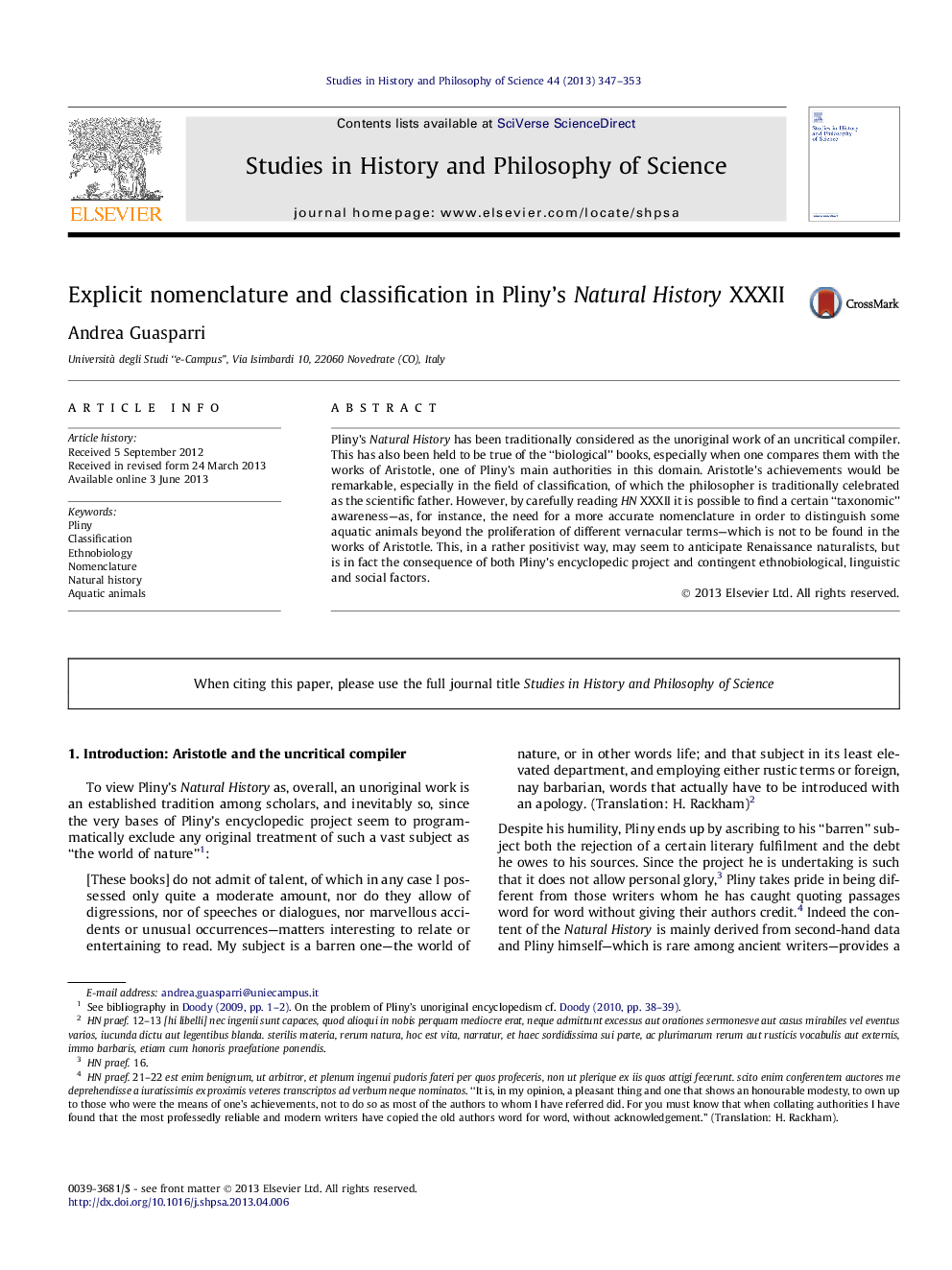| Article ID | Journal | Published Year | Pages | File Type |
|---|---|---|---|---|
| 1160455 | Studies in History and Philosophy of Science Part A | 2013 | 7 Pages |
•Pliny tackles the problem of ambiguous cases in the names of aquatic animals to be used as remedies.•Ethnobiological ranks are used by Pliny for designating a species without ambiguities.•Greek is used against the proliferation of local terms for the same species.•Pliny provides several instances of classificatory nomenclature by exploiting iconic names.•Pliny’s “taxonomic” awareness is not to be found in the biological works of Aristotle.
Pliny’s Natural History has been traditionally considered as the unoriginal work of an uncritical compiler. This has also been held to be true of the “biological” books, especially when one compares them with the works of Aristotle, one of Pliny’s main authorities in this domain. Aristotle’s achievements would be remarkable, especially in the field of classification, of which the philosopher is traditionally celebrated as the scientific father. However, by carefully reading HN XXXII it is possible to find a certain “taxonomic” awareness—as, for instance, the need for a more accurate nomenclature in order to distinguish some aquatic animals beyond the proliferation of different vernacular terms—which is not to be found in the works of Aristotle. This, in a rather positivist way, may seem to anticipate Renaissance naturalists, but is in fact the consequence of both Pliny’s encyclopedic project and contingent ethnobiological, linguistic and social factors.
